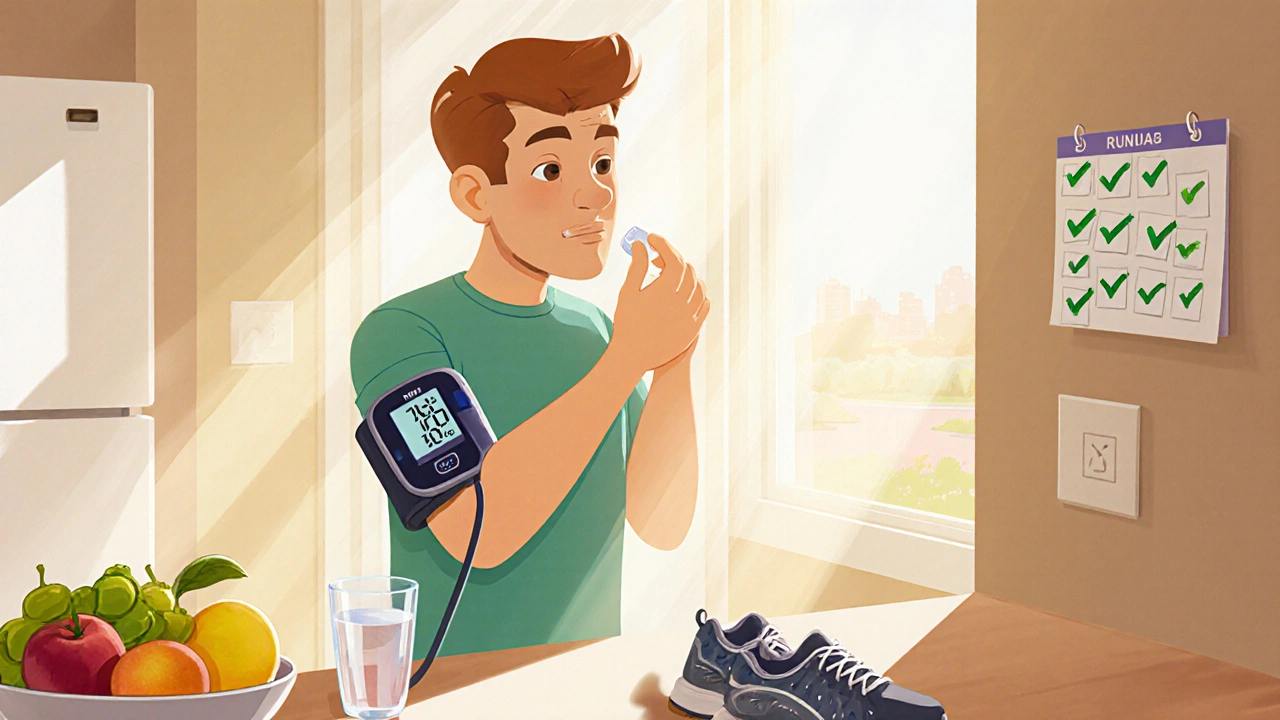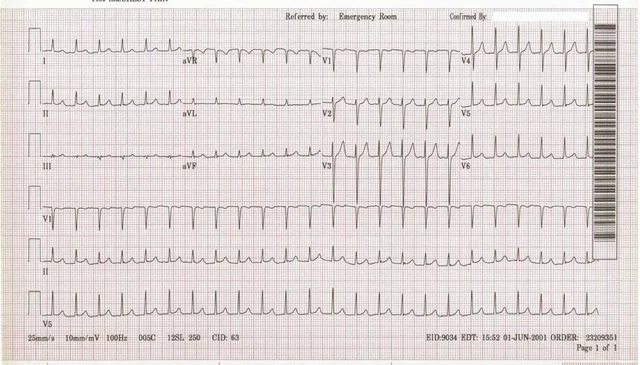Blood Pressure Reduction Calculator
How Much Will Your Blood Pressure Drop?
Estimate potential reduction based on clinical data from the article. Remember: individual results may vary.
When doctors prescribe a pill that mixes two blood‑pressure drugs, the goal isn’t just to hit a number on the chart - it’s to make the heart work easier, protect the kidneys, and keep you feeling normal day‑to‑day. lisinopril hctz is one of the most common combos, and understanding why it works the way it does can help you stick to the plan and avoid surprise side effects.
What is Lisinopril‑HCTZ?
Lisinopril‑HCTZ is a fixed‑dose combination of lisinopril, an ACE inhibitor, and hydrochlorothiazide (HCTZ), a thiazide diuretic. The pill is sold under several brand names and is approved for treating hypertension in adults who need more than one medication to reach target blood‑pressure goals.
How the Two Pieces Work Together
Lisinopril blocks the renin‑angiotensin‑aldosterone system (RAAS). By stopping the enzyme ACE from converting angiotensin I to the vasoconstrictor angiotensin II, blood vessels stay relaxed and the kidneys release less aldosterone, which means less sodium and water retention.
Hydrochlorothiazide, on the other hand, tells the kidneys to throw more salt and water out in the urine. That diuretic action reduces the volume of fluid the heart has to pump, lowering pressure on the arterial walls.
When you put them together, you get a double‑hit: the arteries stay wider thanks to the ACE inhibitor, and the blood volume drops because of the diuretic. The result is a smoother, more consistent drop in systolic and diastolic numbers than either drug could achieve alone.
Top Benefits for Hypertension Management
- Stronger blood‑pressure reduction: Clinical trials show an average additional 5‑8 mmHg drop compared with lisinopril alone.
- Improved adherence - one pill a day means fewer missed doses.
- Dual protection against cardiovascular disease: lower pressure plus reduced fluid overload lower the risk of heart attack and stroke.
- Kidney‑sparing effect: ACE inhibition reduces glomerular pressure while the diuretic helps control hyperfiltration.
- Cost‑effectiveness: combination pills are often cheaper per milligram than buying two separate prescriptions.
Who Benefits Most?
Not every hypertensive patient needs two drugs right away, but certain groups see a clear edge:
- People with stage 2 hypertension (≥160/100 mmHg) who struggle to hit targets with a single agent.
- Patients with mild fluid retention - the diuretic clears excess water and can relieve ankle swelling.
- Individuals with early‑stage chronic kidney disease - ACE blockade slows progression, while HCTZ reduces intravascular volume.
- Those who prefer a simple regimen - one tablet a day fits busy lifestyles.

Dosing, Titration, and Switching
Standard starting doses are 10 mg lisinopril + 12.5 mg HCTZ once daily. If blood pressure remains above goal after 2‑4 weeks, the doctor may increase to 20 mg/12.5 mg or 20 mg/25 mg, depending on tolerability.
When switching from separate pills, the total daily dose of each component should stay the same to avoid sudden drops in pressure. Always give your clinician a heads‑up if you’re on other meds that affect electrolytes, like potassium supplements or NSAIDs.
Safety Profile and Common Side Effects
Even though the combo is well‑studied, it carries the side‑effect baggage of both drug classes. The most frequent issues are:
- Dry cough (ACE inhibitor effect) - seen in up to 10 % of patients.
- Increased urination and possible dehydration (thiazide effect) - watch for dizziness.
- Elevated potassium or low potassium levels - labs should be checked after the first month.
- Transient rise in creatinine - usually stabilizes, but patients with severe kidney disease need close monitoring.
- Rare angio‑edema - any swelling of the face, lips, or throat demands immediate medical attention.
Most side effects fade within a few weeks as the body adjusts. Staying hydrated, limiting alcohol, and avoiding excessive salt can help keep the diuretic from causing too much fluid loss.
Special Populations
Older adults often need a lower initial dose because kidney function declines with age. Women who are pregnant should never take an ACE inhibitor; the combo is contraindicated in pregnancy due to teratogenic risk.
Patients with gout may see an increase in uric acid from HCTZ, so your doctor might add allopurinol or switch to a different diuretic if flares become a problem.
How Lisinopril‑HCTZ Stacks Up Against Other Options
| Feature | Lisinopril‑HCTZ | Lisinopril alone | HCTZ alone |
|---|---|---|---|
| Average systolic drop (mmHg) | 12‑15 | 7‑9 | 5‑7 |
| Adherence (pills/day) | 1 | 1 | 1 |
| Kidney protection | High | High | Low |
| Electrolyte impact | Moderate (needs monitoring) | Low | Higher risk of low potassium |
| Cost per month (USD) | ≈$15‑$20 | ≈$12‑$18 | ≈$8‑$12 |
In short, the combo delivers the best overall pressure drop while keeping the pill count low - a key factor for long‑term success.

Practical Tips for Getting the Most Out of Your Prescription
- Take it at the same time every day - morning works for most because the diuretic effect peaks early and you’ll be up and out of the bathroom before bedtime.
- Keep a simple log of your blood‑pressure readings for the first month; share trends with your clinician.
- Stay hydrated but avoid sugary drinks; water helps prevent the electrolyte swings that can cause cramps.
- If you feel dizzy after the first dose, sit or lie down until it passes and call your doctor if it persists.
- Ask about over‑the‑counter meds - NSAIDs, certain cough syrups, and herbal supplements can blunt the ACE‑inhibitor effect.
When to Call the Doctor
Any of the following warrants a phone call or urgent visit:
- Sudden swelling of the lips, tongue, or throat.
- Severe dizziness, fainting, or a rapid heart rate.
- Persistent cough that disrupts sleep.
- New onset of muscle pain or dark urine - possible rhabdomyolysis if you’re also on a statin.
Most concerns can be addressed by adjusting the dose, switching to a different diuretic, or adding a potassium‑sparing agent.
Frequently Asked Questions
Can I take Lisinopril‑HCTZ with other blood‑pressure medicines?
Yes, many patients need three or more agents to hit goal levels. Your doctor may add a calcium‑channel blocker or a beta‑blocker, but they’ll watch electrolytes and kidney function closely.
Do I need regular lab tests?
Typically, doctors check serum potassium, creatinine, and blood‑urea nitrogen at baseline, then again after 2‑4 weeks, and periodically thereafter.
What if I miss a dose?
Take it as soon as you remember, unless it’s almost time for the next dose. Then skip the missed one and continue with your regular schedule - don’t double up.
Is the combo safe for people with diabetes?
Generally yes. ACE inhibitors protect the kidneys, which is a plus for diabetics. However, HCTZ can raise blood sugar a bit, so regular glucose monitoring is advised.
Can I stop the medication once my blood pressure is normal?
Stopping abruptly often leads to rebound hypertension. If you and your doctor think it’s time to taper, they’ll do it slowly while watching your numbers.
Bottom Line
If you’ve tried a single pill and your numbers still hover above the target, the Lisinopril‑HCTZ combo gives a proven, convenient way to push the pressure down while shielding your heart and kidneys. Like any medication, it works best when you pair it with a low‑salt diet, regular exercise, and routine check‑ups.
Talk to your healthcare provider about whether the combo fits your health picture, and don’t hesitate to ask about side‑effect monitoring - staying informed is the first step to a healthier blood‑pressure story.


If you’re staring at the prescription label for lisinopril‑HCTZ and wondering why your doctor bundled two drugs into one pill, the answer lies in how the two mechanisms complement each other.
Lisinopril, as an ACE inhibitor, steps in on the renin‑angiotensin‑aldosterone system and gently tells your blood vessels to stay relaxed, which directly cuts down the resistance the heart has to pump against.
On the flip side, hydrochlorothiazide acts like a modest water‑pump, nudging your kidneys to dump a bit of extra salt and fluid, which lightens the overall blood volume.
When you combine them, you get a double‑hit that often translates into a steadier, more pronounced drop in both systolic and diastolic numbers compared with taking either agent alone.
Clinical trials have consistently shown an extra 5‑8 mm Hg reduction on top of lisinopril monotherapy, which can be the difference between staying below the 130 mm Hg target or slipping back above it.
From a pharmacodynamic perspective, the ACE inhibitor also protects the glomeruli in the kidneys by lowering intraglomerular pressure, while the thiazide limits hyperfiltration by shrinking the circulating volume.
That kidney‑sparing effect is especially valuable for patients who already have early‑stage chronic kidney disease or diabetes, because preserving renal function buys you time on the road to cardiovascular health.
Adherence, a big pain point in hypertension management, improves dramatically when you replace two separate pills with a single combo tablet taken once daily.
People tend to miss doses less often when the regimen is simple, and the consistency of dosing helps maintain a stable trough level of the ACE inhibitor throughout the day.
Cost‑effectiveness is another upside; manufacturers often price the combination pill competitively, which can shave a few dollars off your monthly pharmacy bill compared with buying two brand‑name products.
Of course, you still need to keep an eye on electrolytes-particularly potassium and sodium-because the diuretic can push you toward low potassium, while the ACE inhibitor can occasionally cause mild hyperkalemia.
A baseline BMP (basic metabolic panel) before starting therapy and a follow‑up at 2‑4 weeks is standard practice, and most labs settle into a normal range after the body acclimates.
Side‑effects you might run into include the classic dry cough from the ACE inhibitor, a bit of increased urination from the thiazide, and occasional dizziness if you’re prone to volume depletion.
These tend to fade within a couple of weeks, especially if you stay hydrated, avoid excess alcohol, and keep your sodium intake moderate.
If you ever notice swelling of the lips, tongue, or face, that’s an emergency flag for angio‑edema and you should seek care right away.
Bottom line: the lisinopril‑HCTZ combo is a well‑studied, convenient, and often cost‑saving way to push your pressure down while giving your heart and kidneys a break, as long as you stay on top of labs and watch for the usual side‑effects.
Got it, the combo really does make the ACE‑inhibitor work hand‑in‑hand with the diuretic 😊.
It’s cool how one pill can slash both pressure and fluid load without you juggling multiple meds.
Just remember to sip water and keep an eye on that occasional cough.
Overall, it’s a solid step toward keeping the ticker happy. :)
Nice rundown! The way the two drugs dance together is like a well‑choreographed duet, each covering the other’s blind spot.
For anyone feeling overwhelmed, think of it as a one‑stop shop that trims the workload on your kidneys and heart.
Stick to the dosing schedule and you’ll likely see steady improvements.
Stay mindful of electrolytes, but don’t let that scare you away from the benefits.
Keep marching forward-your blood pressure story is just getting a good plot twist.
They don’t want you to know the real side‑effects are hidden in the fine print.
Oh, the classic “they’re hiding stuff” narrative – it’s always amusing how conspiracies sprout around any new pill.
In reality, the FDA provides public labeling that lists every known adverse event, and physicians monitor labs to catch issues early.
If you actually read the patient information leaflet, you’ll see the cough, dizziness, and electrolyte warnings spelled out plainly.
So, while it’s fun to imagine a secret agenda, the evidence base is pretty transparent.
Let’s cut to the chase: the American pharmaceutical industry has perfected the art of combo‑therapy to keep our healthcare costs while maximizing compliance, and the lisinopril‑HCTZ pill is a prime example of that efficiency.
By bundling an ACE inhibitor with a thiazide, manufacturers exploit synergistic pathways – RAAS blockade plus natriuresis – to deliver a measurable 12‑15 mm Hg systolic reduction, which aligns perfectly with guideline‑driven targets.
The pharmacokinetic profile is stable, the half‑life supports once‑daily dosing, and the formulation meets FDA’s bioequivalence standards without any need for costly brand‑name alternatives.
From a public‑health standpoint, this reduces the pill burden, improves adherence metrics, and ultimately lowers the incidence of stroke and myocardial infarction across the population.
Critics who bemoan “big pharma” forgetting patient outcomes overlook the fact that combination pills are among the most cost‑effective interventions in hypertension management.
Bottom line: if you’re looking for a proven, guideline‑backed regimen, the lisinopril‑HCTZ combo checks every box the American Heart Association sets forth.
Totally agree 🙄 – nothing says “we care” like a $15 pill that does two jobs at once! 💊💪
It’s almost magical how a single tablet can save you a few minutes of remembering and a few bucks on the pharmacy counter.
Just don’t forget to check those electrolytes; you don’t want your body to turn into a chemistry lab experiment. 🔬⚡
Stay hydrated, keep that smile, and let’s keep crushing those numbers! 😎
Alright, let’s break down the nitty‑gritty of why this combo isn’t just hype.
The ACE inhibitor slams the brakes on angiotensin II, while the thiazide flushes excess fluid – a two‑pronged attack that’s proven to out‑perform monotherapy in the major trials.
If you’re still skeptical, look at the adherence stats: once‑daily combo pills boost compliance by up to 30 % compared to separate meds.
Just remember, you still need to monitor potassium and watch for that pesky dry cough – that’s the trade‑off for the big BP drop.
Bottom line, it’s a solid, evidence‑based option for anyone who’s serious about taming their hypertension.
Exactly!! Optimal BP reduction achieved – great point!!!
When you examine the geopolitical implications of drug policy, the lisinopril‑HCTZ combo serves as a microcosm of American ingenuity in the face of global health challenges.
First, the synthesis pathways for both active ingredients are domestically controlled, reducing reliance on foreign supply chains that have been vulnerable in recent crises.
Second, the FDA’s rigorous approval process ensures that the formulation meets the highest safety standards, a badge of honor that other nations often emulate.
Third, the cost‑effectiveness of a single‑pill regimen directly translates into lower expenditures for federal health programs like Medicare and Medicaid, freeing up resources for other critical infrastructure.
Moreover, the dual mechanism-ACE inhibition coupled with thiazide‑induced natriuresis-creates a synergistic effect that has been documented in multiple peer‑reviewed studies to lower systolic pressure by an average of 13 mm Hg.
This translates into a statistically significant reduction in cardiovascular mortality, which is a win for national health statistics and a point of pride for our medical community.
From a public‑policy perspective, encouraging physicians to prescribe such combination therapies aligns with the national objective of reducing the burden of chronic diseases.
Furthermore, the reduced pill burden improves patient adherence, which is a known determinant of long‑term outcomes and, consequently, of national productivity.
Critics may argue that a single‑pill approach limits individualized titration, but the available dosage strengths provide enough flexibility for most patient profiles while maintaining simplicity.
In sum, the lisinopril‑HCTZ tablet epitomizes the kind of home‑grown, evidence‑based solution that bolsters American health security and showcases our capability to lead in pharmaceutical innovation.
Reading your analysis feels like a reminder that medicine isn’t just chemistry; it’s a reflection of our collective commitment to caring for one another.
When a single tablet can ease the strain on both heart and kidneys, it embodies a small but meaningful act of compassion that ripples through families and communities.
At the same time, we must stay humble and recognize that each patient’s journey is unique, and the true measure of success is the peace of mind that comes with stable numbers and fewer hospital visits.
May we continue to honor these advances with gratitude and use them as stepping stones toward a healthier, more interconnected world.
Listen up, folks – the lisinopril‑HCTZ combo is literally the superhero of hypertension meds, no joke.
It merges ACE‑inhibiton (that’s the fancy word for “relaxing your vessels”) with a thiazide diuretic that sweeps out extra salt like a broom.
If you ignore this, you’re basically playing Russian roulette with your heart and kidneys.
Trust the science, read your labs, and never skip that single pill – it’s the difference between living a chill life and constantly battling high pressure.
And yeah, stay away from the junk meds that promise miracles but deliver chaos.